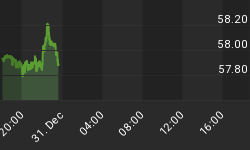The bouyant stock market environment of the past several years is gone, and the financial wreckage of 2008 is still sharp in our minds as a new year starts to unfold.
Given the recent across-the-board-declines in global stock markets (and most asset classes) that have left many investors shell-shocked, you might wonder if there is any good reason to consider the merits of a hot new investment theme, such as clean energy.
However, we shouldn't be too hasty to write off all future stock investments. After all, the market declines of 2008 may continue into 2009, but they may also leave interesting investment opportunities in their wake. Which brings us to the subject of this review.
John Rubino, author and editor of GreenStockInvesting.com, recently released a new book on renewable energy and clean-tech investing entitled, Clean Money: Picking Winners in the Green Tech Boom.
In Clean Money, Rubino introduces readers to the fundamentals driving the rise in clean technology and tells us how to invest along with this trend. But it's not a "close your eyes and pick the winners" type propositions. As the author explains in the book's opening chapters, hot markets (such as clean-tech) are dangerous markets. Hype, con-jobs, and failed promises are sure to accompany this boom.
Rubino explains: "When something seems to have unlimited potential, it becomes, by definition, hard to measure and therefore hard to value. Tools for distinguishing fantasy from reality are crucial, and that's what this book attempts to provide".
From its early chapters on, Clean Money does an admirable job of providing this kind of background information and guidance to the would-be clean-tech investor.
The book gets rolling with some fascinating summary accounts of how environmental problems and resource depletion led to civilization collapse in ancient cultures, relating these lessons of the past to our current problems.
This brings us to some important questions. Will we be able to recognize the environmental constraints facing us and meet these problems head on with clean energy and resource saving technologies? And how can we invest intelligently along with this theme?
That's where the main focus of this book lies, and Rubino provides us with some very reasoned and worthwhile overviews of the numerous renewable energy resources, the importance of energy storage, scientific advancements that will help us boost energy efficiencies and conserve our material resources, and other clean-tech investing themes, such as "green building" and pollution control.
Throughout the book, the author does a commendable job of honestly appraising the likely benefits and shortcomings of the potential energy resources and clean technologies. There is little in the way of "pie-in-the-sky" forecasting here; in fact, Rubino provides a much-needed service in his frank appraisals of other well-hyped and overrated energy panaceas such as corn ethanol and the "hydrogen economy".
The money-making side of the book also follows through on its promise. Investment ideas and company ticker symbols relating to each investment theme are well organized and included in every chapter. Another helpful feature are the occasional "object lessons" that warn of the pitfalls of buying into stocks and new technologies that are long on promise and short on tangible results.
If there are criticisms to be made, they are slight and tend towards errors of omission. For example, the writing on water desalination technology is informative, but it makes no mention of the potential drawbacks of desalination.
Also, while traditional hydropower is ruled out as an environmentally unsound energy source early on in the book, there was no mention of tidal energy and its potential benefits or pitfalls (possibly due to space constraints?).
On a more positive note, the author does a very good job of appraising the bear market conditions of 2008 (the book was written in early 2008) and the resulting difficulties that could arise for clean tech investors over the next few years.
The book's closing chapters provide a fine overview of the green investing options (mutual funds, ETFs, shares) that are easily available to most individual investors, along with some thoughts on the industries and companies that are likely to be winners and losers in the wake of clean-tech's rise.
So does Clean Money meet its stated goal of providing value to clean-tech investors?
Overall, the book's positives far outweigh the negatives, and Rubino succeeds in delivering a useful guide for the clean energy investor or those who are simply curious about the true potential of upcoming renewable energy resources and clean technologies. Recommended.

















